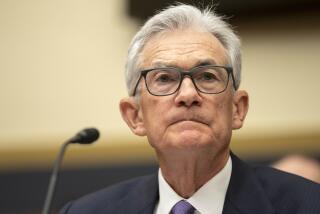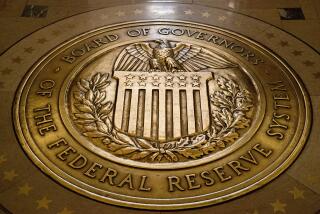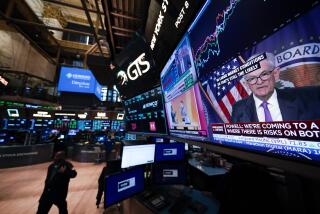Federal Reserve minutes show division over stimulus program
WASHINGTON -- Most Federal Reserve policymakers favor maintaining the current pace of bond-buying until at least the middle of this year, but the weak March jobs report muddles the picture of when the Fed might pull back and eventually halt its stimulus program.
Minutes of the Fed’s last policy meeting three weeks ago, released Wednesday, show that the 19 participants were divided over when to wind down the central bank’s program of purchasing monthly $85 billion of Treasury and mortgage-backed securities.
Some officials see the Fed tapering off the purchases “around midyear.” Others at the meeting advocated keeping the current level of stimulus in place through the third quarter, while still others thought it would continue until at least the end of this year, according to the minutes, which were released several hours earlier than scheduled because they were mistakenly sent Tuesday to congressional staff and trade groups.
The Fed’s debate over the size and duration of the bond-buying, known as quantitative easing, has heated up in recent months as the economy showed signs of perking up and experts expressed worries about the potential harm of keeping the easy-money spigot open for a long time.
Full coverage: KPMG auditor accused of insider trading
Besides the risk of igniting inflation, economists and some Fed officials are concerned that the current accommodative policies are encouraging excessive risk-taking and could destabilize financial markets.
Fed staff members, who were directed to study the costs and benefits of the latest round of quantitative easing, indicated at the March 19-20 meeting that the low interest rates likely have helped boost asset prices and increased the flow of credit to consumers and businesses -- for example, spurring auto and home sales. “But these changes to date do not appear to have been accompanied by significant financial imbalances,” the minutes said of the staff review.
Most Fed policymakers agreed with that general assessment at the last meeting, which was reflected in their policy statement that described the risks as “manageable.”
Still, a few participants see things differently, saying the costs of the bond-buying likely were outweighing the benefits, according to the minutes. “A few others saw the risks as increasing fairly quickly with the size of the Federal Reserve’s balance sheet,” the account said, noting that these officials wanted the pace of purchases to be reduced before long.
The Fed has stated that it would adjust its bond-buying program based on the outlook for the labor market. The Fed’s objective is to control inflation and maximize employment, and with the unemployment rate still high and many people jobless for many months, officials have been focusing more on the employment part of its mandate.
When the Fed last met, there had been a series of data suggesting a pick-up in economic activity as well as the pace of employment growth, with employers adding more than 200,000 jobs in February. But the economic statistics have turned softer this month. Job growth in March fell to a sluggish 88,000 and hundreds of thousands of workers left the labor market.
Paul Ashworth, chief U.S. economist at Capital Economics, said the key line in the minutes is that “many participants” see the pace of bond purchases slowing “at some point over the next several meetings” should job-market conditions continue to improve. The Fed’s next policy meeting is at the end of April.
“Obviously, the weakness of employment growth in March, if it proves to be the start of a weaker trend rather than a blip, would disrupt that timetable,” Ashworth said. “But assuming employment growth rebounds, as we think it will, that timetable still looks valid.”
ALSO:
Jobs report paints a dreary picture
Fed district chief foresees phaseout of stimulus by year’s end
WTO cuts forecast for global trade growth amid European slowdown







